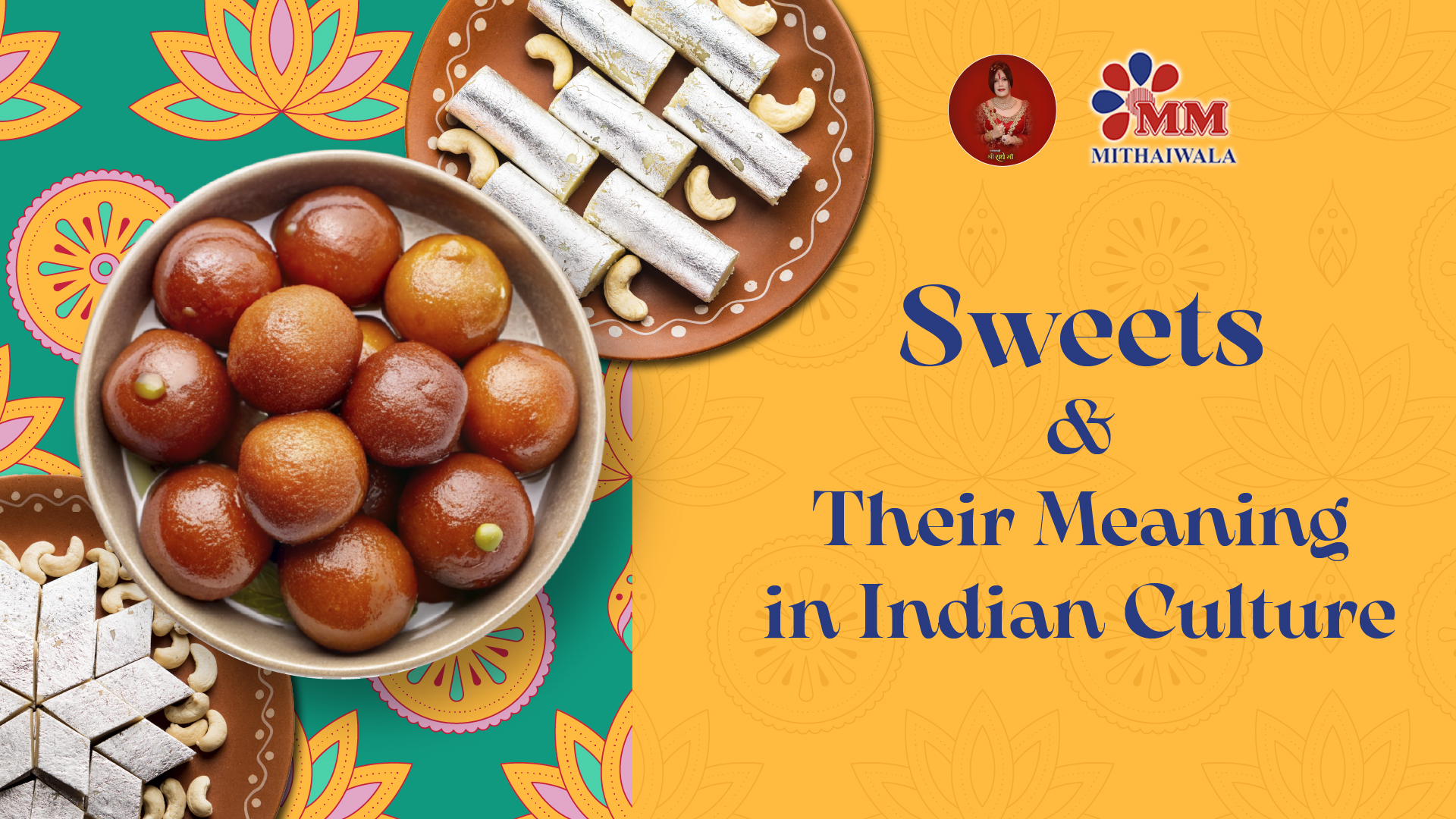Sweets and Their Meaning in Indian Culture
Indian festivals are vibrant, full of sounds, and flavorful experiences. Whereas sweets are right in the center of them, Every festival has its unique cuisine, that symbolizes joy, prosperity, and the spirit of togetherness and holds a special position in their culture. Apart from Diwali, the exploration of Indian sweet dishes will depict great variations in Indian sweets.
Destined Sweets in Indian Festivals
Sweets, or mithai, play an important part in Indian culture, as it means happiness and goodwill. Prepared and distributed on different occasions such as festivals and weddings, it does glue people together. The preparation of sweets remains a tradition loved by many, tending to unite families so that community ties would be reinforced.
Diwali – The Festival of Tasteful Delights
Diwali is probably the most celebrated festival in India. It is characterized by an exchange of lights and sweets, literal and metaphorical. Extensive preparations are made in the home for preparing sweets for the festival. The preparation often involves making several types of sweets for Diwali to be shared with people near and dear.
Gulab Jamun: Khoya, the classic favorite is soft balls soaked in sugar syrup, synonymous with celebration.
Kaju Katli: This is a diamond-shaped cut-short cashew nuts mithai; it is incomplete without Diwali. It is a product that represents prosperity and good fortune.
Laddus: Starting from besan laddus to boondi laddus, sweets in round shapes are prepared in different forms in different places, but these are an inevitable constituent of any festival.
Barfi: This is a type of fudge-like sweet made from various ingredients, such as milk, sugar, and nuts. The most common types are coconut and badam (almond barfi).
Rasmalai: Soft cheese is a flat ball soaked in cardamom and saffron-flavored sweetened milk is one of those desserts that are sure to be refreshing treats for the festive season.
Ganesh Chaturthi: Celebrating the Arrival of Lord Ganesha
This festival commemorates the birth of Lord Ganesha, who is known to remove all obstacles and serves a big part in this festival through sweet offerings to Lord Ganesha.
Modaks: Called Ganesha’s favorite sweet, these coconut and jaggery-filled dumplings symbolize the sweetness of life and devotion.
Kaju Katli: The other sweet that is in great demand at this festival is kaju katli, which is used as a prasad and distributed among the devotees.
Motichoor Laddu: Motichoor Laddu is another favorite sweet of Shri Ganesha after Modak. He has a great fondness for Big Round Laddus.
Holi: The Festival of Colours
The celebration of Holi is welcome for the spring season with colors and happy celebrations of the victory of goodness over evil with the end of Holika and Asura Hiranyakashipu. This celebration is also characterized by vibrant sweets and colors.
Gujiya: These crescent-shaped deep-fried pastries are filled with khoya and dry fruits. Gujiya is referred to as a symbol of joyous times and togetherness represented during Holi.
Bhang Lassi: Not being a conventional sweet, it is one of those yogurt-based cannabis-infused drinks that finds consumption during Holi celebrations along with mithai.
Raksha Bandhan: Celebration of Brotherhood and Sisterhood
Raksha Bandhan symbolizes the bond of siblings. On this Raksha Bandhan day, sisters tie on their brother’s wrist a protective thread called rakhi, and brothers give gifts to sisters in return.
Bundle of motichoor laddu: A small round laddu formed out of a bundle of tiny fried droplets of a chickpea batter is considered one of the most favored mithai of Raksha Bandhan.
Rasgulla: Soft, spongy balls made out of chenna. Cottage cheese is soaked in sugar syrup. That is the craze for these; they are exchanged as a sweet token in relationships.
Eid: Celebration of Faith
Eid marks the end of Ramadan and is celebrated with feasting and sweets. Traditional sweets play an important role in this festival too.
Seviyan, Vermicelli Kheer: A sweet dish made from roasted vermicelli cooked in milk and flavored with cardamom, garnished with nuts. It’s one of the most popular dishes often served during Eid celebrations.
Baklava: Although a Middle Eastern dish, this rich dessert made of nuts and honey features much in many Indian Muslim families Eid celebrations.
Pongal: A Harvest Festival
Pongal is observed mainly in Tamil Nadu, Karnataka, Andhra Pradesh, and Telangana in South India to celebrate the harvesting season. The harvest festival involves preparing traditional dishes that represent prosperity.
Pongal Sweet: Cooked along with jaggery, this sweet rice is flavored with cardamom to show appreciation for the produce.
Kozhukattai: Rice flour dumplings filled with sweet coconut and jaggery mixture are offered to deities during Pongal.
Baisakhi: The Punjabi New Year
The harvest season welcomed in Punjab is celebrated with great zest. Kheer is a milk-based rice pudding flavored with cardamom, along with sugar, which is prepared during Baisakhi as a metaphor for prosperity.
Churma Ladoo: Powdered wheat flour preparation mixed with ghee and jaggery is the recipe for laddus. This traditional dish is cherished when the Baisakhi festival is in town.
Health with Delectable Taste
While festival sweets are savored to indulge in these little morsels, one needs to do so in moderation, as festival sweets are high in sugar. Many recipes can be adapted to use healthier alternatives, such as jaggery or fewer sugars without compromising on the taste.
The Taste of Sweet Dish in India
India’s vast expanse also plays the role of accompaniment in bringing forth a potpourri of regional sweets; the final choice being decided upon by local ingredients and traditions :
Northern India: Known for milk-based sweets like Rasgulla and Gulab Jamun.
Western India: Sweet dishes like Puran Poli (a stuffed sweet bread) and Shrikhand, a yogurt dessert.
Southern India: Sweets like Mysore Pak, a gram flour-based sweet, and Payasam, a rice or vermicelli pudding.
East India: Land of Mishti Doi and Sandesh (Fresh Cheese delicacies).
Various regions have special products prepared as part of rituals during festivals, reflecting the richness of Indian culinary traditions.
Conclusion
These sweets represent the essence of Indian festivals; they symbolize joy, prosperity, love, and togetherness, all of which have deep roots in these celebrations. Whether it was the richly flavored sweets during Diwali, or unique offerings on Ganesh Chaturthi and Holi, each sweet dish had its story rooted deep in tradition.
As they gather together to prepare these delicious mithai or exchange boxes of assorted mithai, they bridge gaps across generations. From the indulgent taste of the Gulab Jamun to the reassuring sweetness of Laddus, festival sweets will never fade from the cultural heritage of India.





